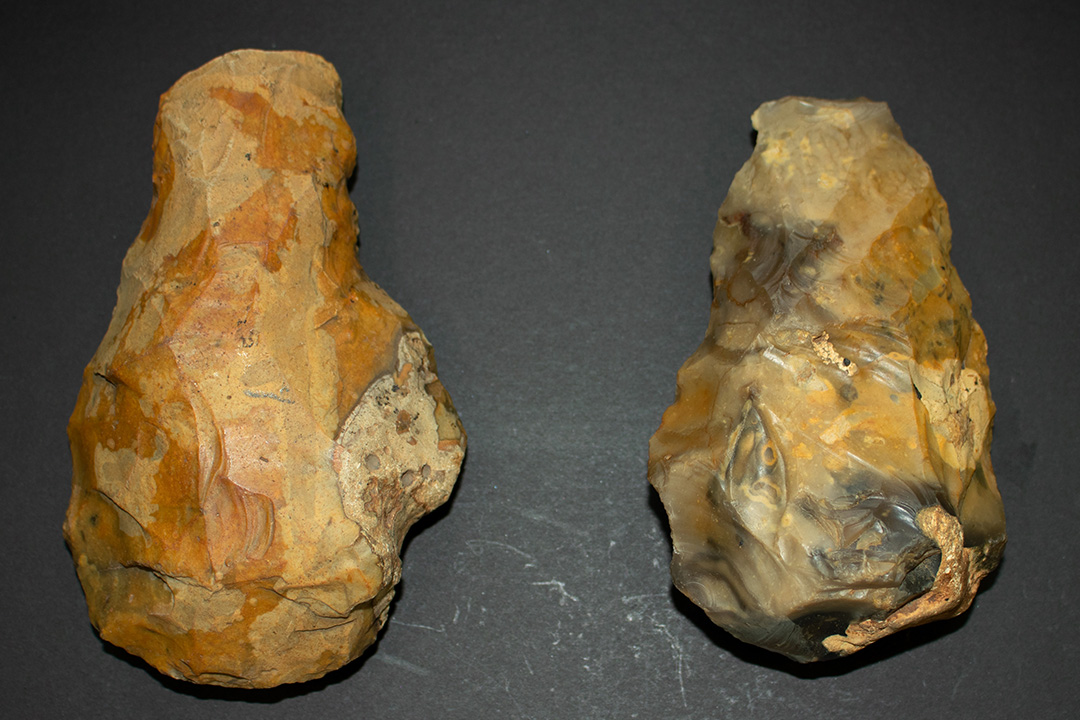
Neanderthal hand axes connect USask students to the past
For more than 50 years, first-year archaeology students at the University of Saskatchewan (USask) have been invited to hold a piece of prehistory in their hands.
By Chris Putnam“It really drives home that sense of awe when you can hold something that someone created so long ago, and just think about all that goes along with it,” said Denise Huynh, a sessional lecturer in the Department of Archaeology and Anthropology.

The department is home to a pair of stone hand axes made by Neanderthals about 200,000 years ago. Some of the oldest human-made objects on campus, they are brought out each year to be handled by a new group of students.
“I think about how lucky I am that these have just always been here. We’re really spoiled to be able to use these tools for teaching purposes,” said Huynh.
Each of the two almond-shaped hand axes can be held comfortably in a palm. Neanderthals might have used the sharp-edged tools for cutting, butchering, digging and chopping wood.
The hand axes were donated to USask in 1965, near the founding of the archaeology and anthropology department in the College of Arts and Science. They came from the collection of the late Canadian archaeologist Henri-Marc Ami, who uncovered them in Southern France in the 1920s.
“We always tell the students it’s not just a rock. This is a record of ancient decision-making. You’ve got to think about the thought processes, the decisions that have gone into it, and even the education,” said Huynh.
The hand axes are part of a tool-making tradition inherited by Neanderthals from an even more ancient species of human. The skill was likely passed down from generation to generation for hundreds of thousands of years.
“That's the beauty of stone tools. They survive archaeologically. So much of daily life does not survive archaeologically, but from these objects we can get an idea of what people ate, how it was processed, what their lives were like,” said Huynh.
Neanderthals later learned to make more sophisticated tools until their species was finally replaced by modern humans about 40,000 years ago.
“Neanderthals were incredibly adapted to their environment,” said Huynh. “But when the climate changed, they just didn't have the same complex brains, the same ability to change, that these up-and-comer Homo sapiens had.”
The Neanderthals are gone, but proof of their ingenuity survives in tools such as the hand axes at USask.
“It takes a very intelligent mind to be able to create something like this,” said Huynh.

